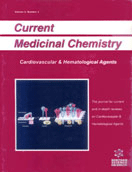Abstract
Diadenosine polyphosphates (ApnA) are naturally occurring molecules which have been identified in human and guinea-pig cardiac tissue and whose physiological role is being established. They are stored in platelet dense granules in a metabolically inactive form. ApnA form a class of dinucleotides, including diadenosine triphosphate (Ap3A), diadenosine tetraphosphate (Ap4A), diadenosine pentaphosphate (Ap5A) and diadenosine hexaphosphate (Ap6A) which have vasopressor actions in some tissues and vasodilator actions in others. ApnA have been reported to interact with receptors distinct from P1 and P2-purinoceptors, and the presence of a unique Ap4A receptor has been demonstrated in isolated ventricular myocytes. Despite the identification of this receptor, other studies suggest that some of the cardiovascular effects are mediated by purinoceptors. ApnA are released from platelet dense granules into the circulation during the platelet release reaction where they can reduce heart rate. The existence of ApnA in myocardial tissue and platelet granules as well as their effects on coronary artery tone and myocardial function suggests a regulatory role for these compounds in the heart. This review describes the effects of ApnA in terms of their coronary vasomotor and cardiac electrophysiological effects. The mechanism responsible for these effects is reviewed; including the involvement of purinergic receptors, the effects of alterations in extracellular pH and the contribution of nitric oxide and prostanoids. Potential pro-arrhythmogenic effects of diadenosine polyphosphates during myocardial ischaemia are also discussed as these compounds could contribute to inhomogeneities of repolarization in ischaemic myocardium.
Keywords: dinucleotide polyphosphates, electrophysiology, action potential duration, refractory period
 2
2













